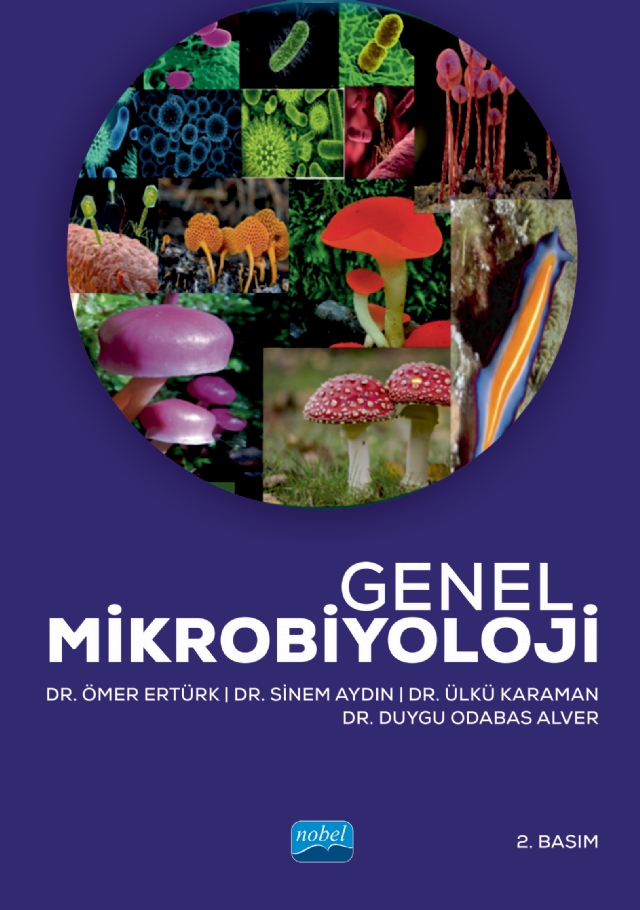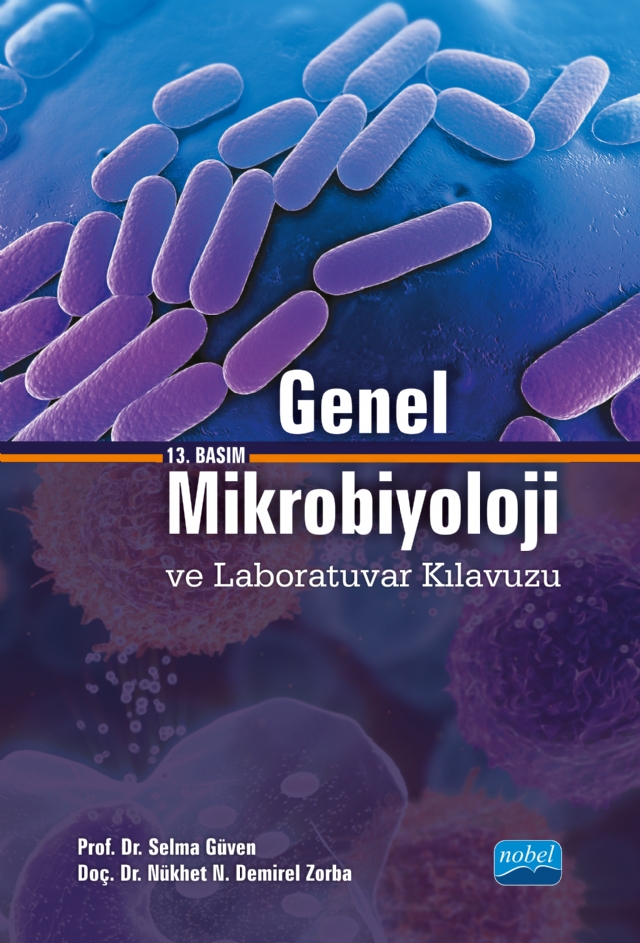Dialysis \ 1-1

This book has been prepared with the aim of helping students better understand the Anatomy and Physiology or Human Biology course and to provide a resource for students. While creating the book, care was taken to ensure that the information was short and sufficient. Information about common diseases related to each system is also given. Information in the book; supported by numerous figures, photographs and tables.
This work; It has been prepared at a level that can be useful to students of the Biology Department of the Faculty of Science, Arts and Sciences, as well as to students of other faculties or colleges who take the Anatomy and Physiology course.
This work; It has been prepared at a level that can be useful to students of the Biology Department of the Faculty of Science, Arts and Sciences, as well as to students of other faculties or colleges who take the Anatomy and Physiology course.

In this book; the organs and organ systems that make up the human body, how the organism functions in its integrity, and how the functional organization of our body takes place are explained in a simple level.
Firstly; in the structural and functional organization part of the human body, it is explained how the basic elements that exist in nature come together to form first chemical compounds, then cells, tissues, organs, systems and finally the whole of the organism and how they work in harmony by completing each other.
In the next parts of the book, cells, which are the functional unit of the organism, respectively; blood, which has basic functions such as transport, protection and regulation; nervous system with functions such as rapid control, coordination and learning-memory between systems; muscular system that elicits movements; the heart and circulatory system, which ensures that blood circulates throughout the body; the respiratory system that provides oxygen, which is the most basic requirement of life; digestive system, which allows energy sources and metabolic building blocks to enter the body; excretory system that allows the wastes formed in the body to be excreted through urine; the sensory system that ensures harmony with our environment through communication; endocrine system, which provides long-term and permanent coordination between systems; the reproductive system that maintains the species; nutrition, metabolism and thermoregulation events are explained separately in each section with the support of some anatomy knowledge.
Firstly; in the structural and functional organization part of the human body, it is explained how the basic elements that exist in nature come together to form first chemical compounds, then cells, tissues, organs, systems and finally the whole of the organism and how they work in harmony by completing each other.
In the next parts of the book, cells, which are the functional unit of the organism, respectively; blood, which has basic functions such as transport, protection and regulation; nervous system with functions such as rapid control, coordination and learning-memory between systems; muscular system that elicits movements; the heart and circulatory system, which ensures that blood circulates throughout the body; the respiratory system that provides oxygen, which is the most basic requirement of life; digestive system, which allows energy sources and metabolic building blocks to enter the body; excretory system that allows the wastes formed in the body to be excreted through urine; the sensory system that ensures harmony with our environment through communication; endocrine system, which provides long-term and permanent coordination between systems; the reproductive system that maintains the species; nutrition, metabolism and thermoregulation events are explained separately in each section with the support of some anatomy knowledge.

Microbiology has become an important and interesting field for beginners. While learning the content and concepts of basic microbiology, many questions are asked: How do I learn the names of all these microorganisms? What infection does bacteria, virus or fungus cause and which diseases do they cause? How are these diseases treated? In this book, comprehensive information is presented about the information that a student or an academician interested in the field of microbiology is curious about in the field of microbiology. The basic concepts of General and Molecular Microbiology have been tried to be presented in a clear and concise manner that will appeal to students studying in different health fields and academicians interested in microbiology. The topics are written in a plain language, with uncomplicated explanations for difficult concepts. The topics were summarized through tables and figures rather than a long text, and colorful visuals were included for students. In particular, the important points in the reviews were highlighted in the boxes to help the students, and the study questions were prepared to address the relevant aspects of each subject, including clinical cases, and each section was prepared with current developments and information on microbiology. The book starts with a general introduction to microbiology and continues with chapters where general microbiology issues are discussed in detail. All microorganisms are given individually under sections. The sections on bacteria, viruses, fungi and parasites are neatly arranged. Each chapter is presented in color to excite those interested in microbiology and engage them while teaching new information. The book will also be useful in the laboratory applications of the subjects that form the basis of microbiology in the faculties of science, education faculties, medical faculties and dentistry faculties.

The first edition of our book, of which we have made the 12th edition, was made in 2003 under the title of "General Microbiology". It includes topics such as the morphology, cell structures, development, reproduction, ecology, hereditary changes, classification of microorganisms and consists of 10 chapters. In the 2 (2007), 3 (2011), 4 (2013), 5 (February 2015), 6 (November 2015) editions of the book, tools and equipment used in the microbiology laboratory, aseptic technique, sterilization, microscope types, staining methods, pure culture techniques Laboratory applications such as , media, counting methods are also included. Thus, the book consisting of 24 chapters was named as “General Microbiology and Laboratory Guide”.
In each renewed edition, new sources on the subject were scanned and important information was added. In the 4th edition made in 2013, no significant changes were made in the subject headings except for the additional titles of the structure and functions of nucleic acids (3.2.8.1.) and general and current summary information about antibiotics (5.5.). However, in the 5th edition, the subsection on the structure-functions of nucleic acids (3.2.8.1.) was taken to the 9th section and the name of this section was changed to "genetics of microorganisms and hereditary change". In the 9th edition, additions were made to the 10th chapter. In the 10th and 11th editions, some grammatical errors were corrected and in the last edition the importance of microbiology was added.
Our aim is to present a book on General Microbiology to the students of the Food Engineering Department of the faculties of Engineering and Agriculture and to the students of other departments studying General Microbiology at Universities. Of course, we will be proud that everyone who is interested in the subject will benefit from our book.
We are happy to be able to make the tenth edition of our book, which is popularly read in the relevant departments of both our universities and vocational schools.
In each renewed edition, new sources on the subject were scanned and important information was added. In the 4th edition made in 2013, no significant changes were made in the subject headings except for the additional titles of the structure and functions of nucleic acids (3.2.8.1.) and general and current summary information about antibiotics (5.5.). However, in the 5th edition, the subsection on the structure-functions of nucleic acids (3.2.8.1.) was taken to the 9th section and the name of this section was changed to "genetics of microorganisms and hereditary change". In the 9th edition, additions were made to the 10th chapter. In the 10th and 11th editions, some grammatical errors were corrected and in the last edition the importance of microbiology was added.
Our aim is to present a book on General Microbiology to the students of the Food Engineering Department of the faculties of Engineering and Agriculture and to the students of other departments studying General Microbiology at Universities. Of course, we will be proud that everyone who is interested in the subject will benefit from our book.
We are happy to be able to make the tenth edition of our book, which is popularly read in the relevant departments of both our universities and vocational schools.
